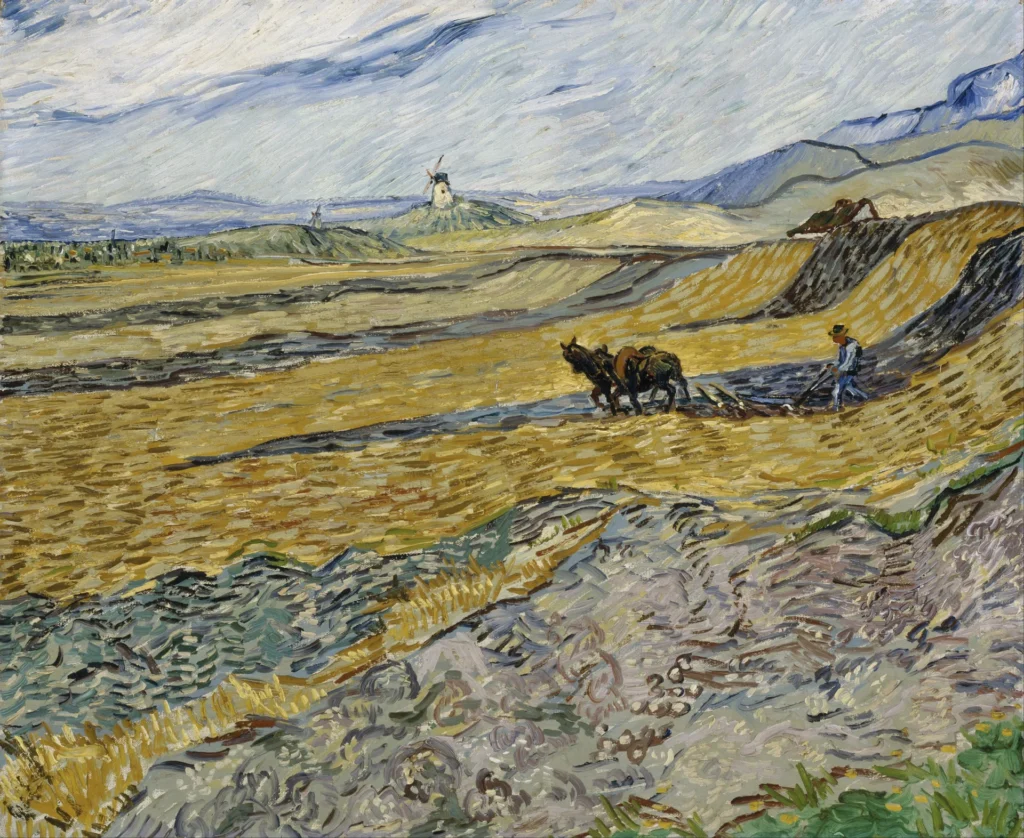Enclosed Field With Ploughman
Enclosed Field with Ploughman, painted by Vincent van Gogh in October 1889, depicts a vibrant scene filled with contrasting colors of the yellow stubble and purplish earth. Created during his stay at the asylum in Saint-Rémy-de-Provence, this artwork reflects the isolation he experienced yet showcases his incredible ability to transform a mundane landscape into a dynamic piece of art. The inclusion of imagined windmills adds a layer of interpretation, making the scene both idyllic and introspective.
Year 1889
About the Artwork
Vincent van Gogh created Enclosed Field with Ploughman during a challenging period in his life. In May 1889, he voluntarily entered the asylum in Saint-Rémy-de-Provence, seeking treatment for his mental health. This painting is part of a series inspired by the view from his barred window. Despite the constraints of his environment, Van Gogh's creativity flourished. The ploughman in the field symbolizes hard labor, a common theme in his works, reflecting his connection to the earth and the working class. The envisioned windmills emphasize his longing for freedom and the imaginative landscapes that filled his mind amidst isolation.
Did You Know
The distant windmills in the background of Enclosed Field with Ploughman were products of Van Gogh’s imagination, as they were not seen from his actual window. This illustrates his ability to infuse personal interpretation into his works.
This painting reflects Van Gogh’s emotional state during his asylum stay; he often used landscape as a means of expressing his inner turmoil, contrasting vibrant colors with themes of isolation and labor.
The ploughman depicted in the artwork symbolizes the industrious spirit of the working class, which was a recurring theme in Van Gogh’s body of work, showing his admiration for labor and the human connection to the earth.










